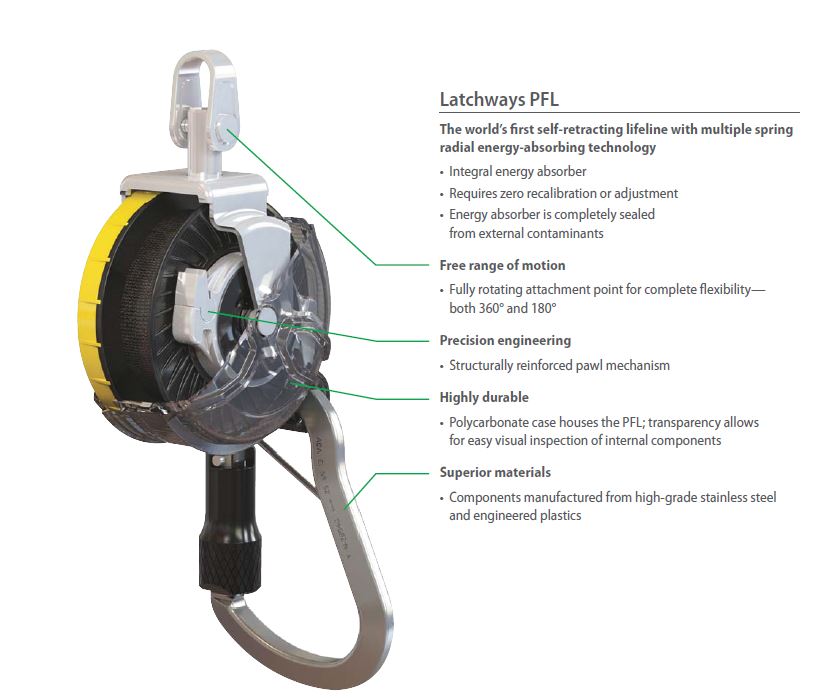Lanyards versus Self-Retracting Lifelines & Personal Fall Arrest System
Tool box talks often make reference to the ABCD’s of fall protection–Anchorage, Body Harness, Connecting Device, and Descent/Rescue. In this post, our focus is the letter C and we’ll discuss the pros and cons of common connecting devices: shock absorbing lanyards, self-retracting lifelines (SRL’s) and personal fall limiters (PFL’s).
If you are wondering which classification of connecting device is best, there is no universal answer. As PPE (personal protective equipment) goes, lanyards are less expensive than SRL’s and PFL’s, so when cost is the primary concern, lanyards often get the nod. That said, we caution making safety decisions exclusively on price. When looking beyond cost, remember, lanyards are not always the best option because they require more fall distance clearance than a self-retracting lifeline or personal fall arrest system.
You’ll pay more for SRL’s and PFL’s but retractable connecting devices arrest falls faster than lanyards. During a fall, the braking mechanism inside an SRL or PFL begins to engage within 8 to 9 inches, decelerating the drop, and within 2-4 feet, the fall is arrested.
With a typical lanyard, you’ll experience free fall the entire length of the connecting device before the shock absorbing stitching starts to give way. You also need to factor in the height of the worker, deceleration distance, and OSHA’s safety factor of two feet. All said, lanyard fall clearance distance approaches between 17 and 18 feet. When you look hard at these numbers, you begin to see why many employees prefer retractables.
Although reducing fall clearance distance is important (and even vital with some applications) there are other advantages to SRL’s. Assuming a fixed anchor point, the working radius is limited by lanyard length. Moving beyond this compact work area requires disconnecting from the original anchorage and re-connecting to a new anchor point. With retractable devices, the worker is free to cover a larger work radius.
Assuming you are inclined to recommend use of a retractable, you still have some choices to make. Although both SRL’s and PFL’s work in similar fashion, there are some important differences. SRL’s tend to be heavier, and as such, they are typically attached to the anchor point whereas the lighter PFL is usually attached to the user’s harness. SRL’s are also available in longer lengths.
MSA-Latchways has just introduced a new, compact PFL for close anchorage applications (e.g., construction) called the Mini PFL. Available in single and double leg configurations with a wide range of snap hook and carabiner options, the Mini PFL is the world’s first self-retracting lifeline to feature multiple spring radial energy-absorbing technology. The image below details the features that are built into Latchways PFL’s:

**Download the MSA-Latchways 10′ PFL Product Bulletin**
**Download the MSA-Latchways 6′ Mini-PFL Product Bulletin**
Remember, saving money is a moot point if the PPE can’t arrest a fall before your employee strikes the ground or equipment beneath the work area. And while it is tempting to shop on price, remember to carefully consider cost and APPLICATION before selecting fall protection PPE.
If you have questions about choosing the right PPE for your fall protection application, or need to order Self-Retracting Lifelines, Personal Fall Arrest system, or Lanyards, contact the safety experts at Diversified Fall Protection for further assistance.
Schedule an assessment with Diversified Fall Protection
Contact Us to request a fall safety review

b-1.jpg?width=1368&height=1340&name=Rail%20(175)b-1.jpg)

